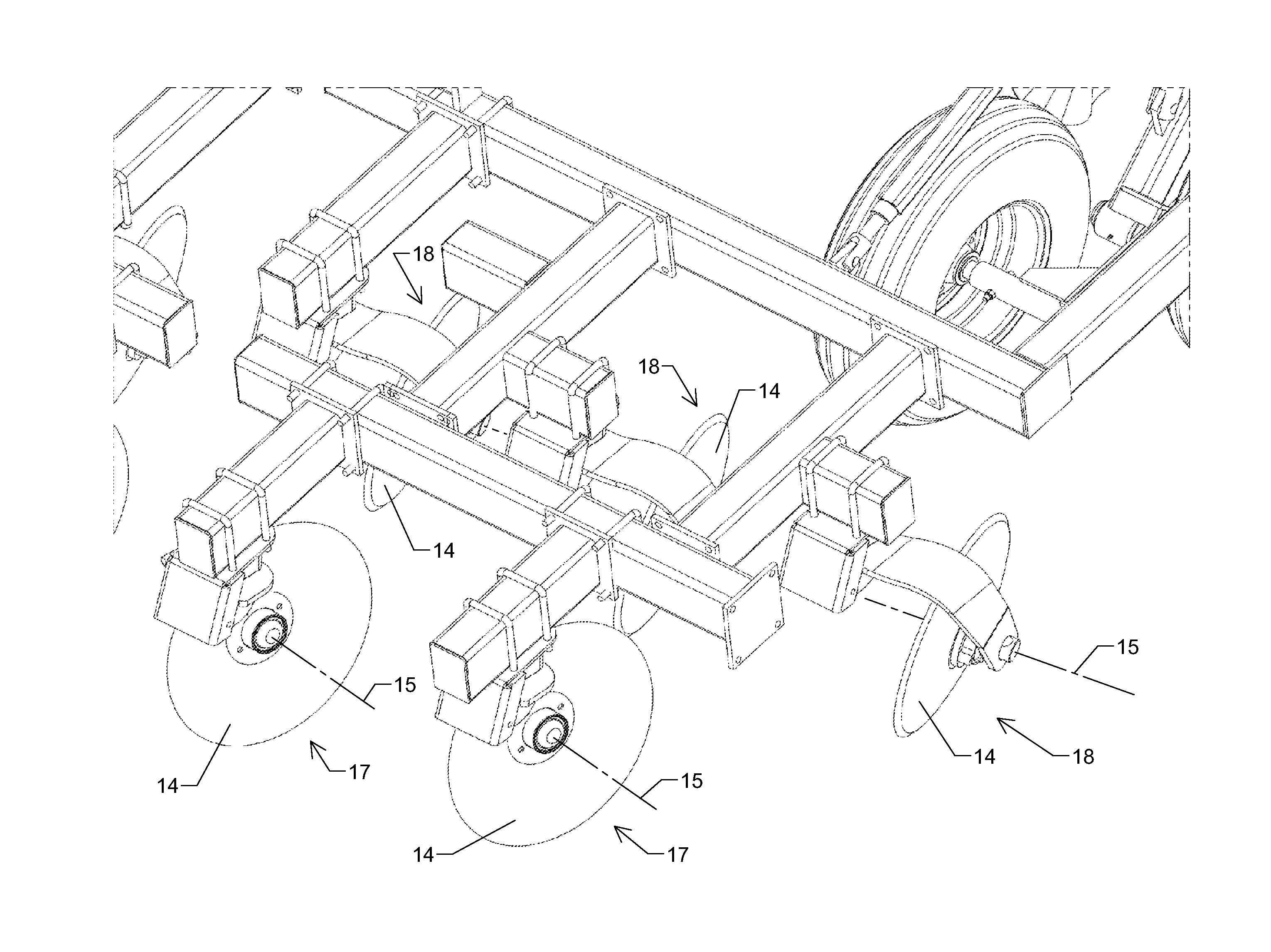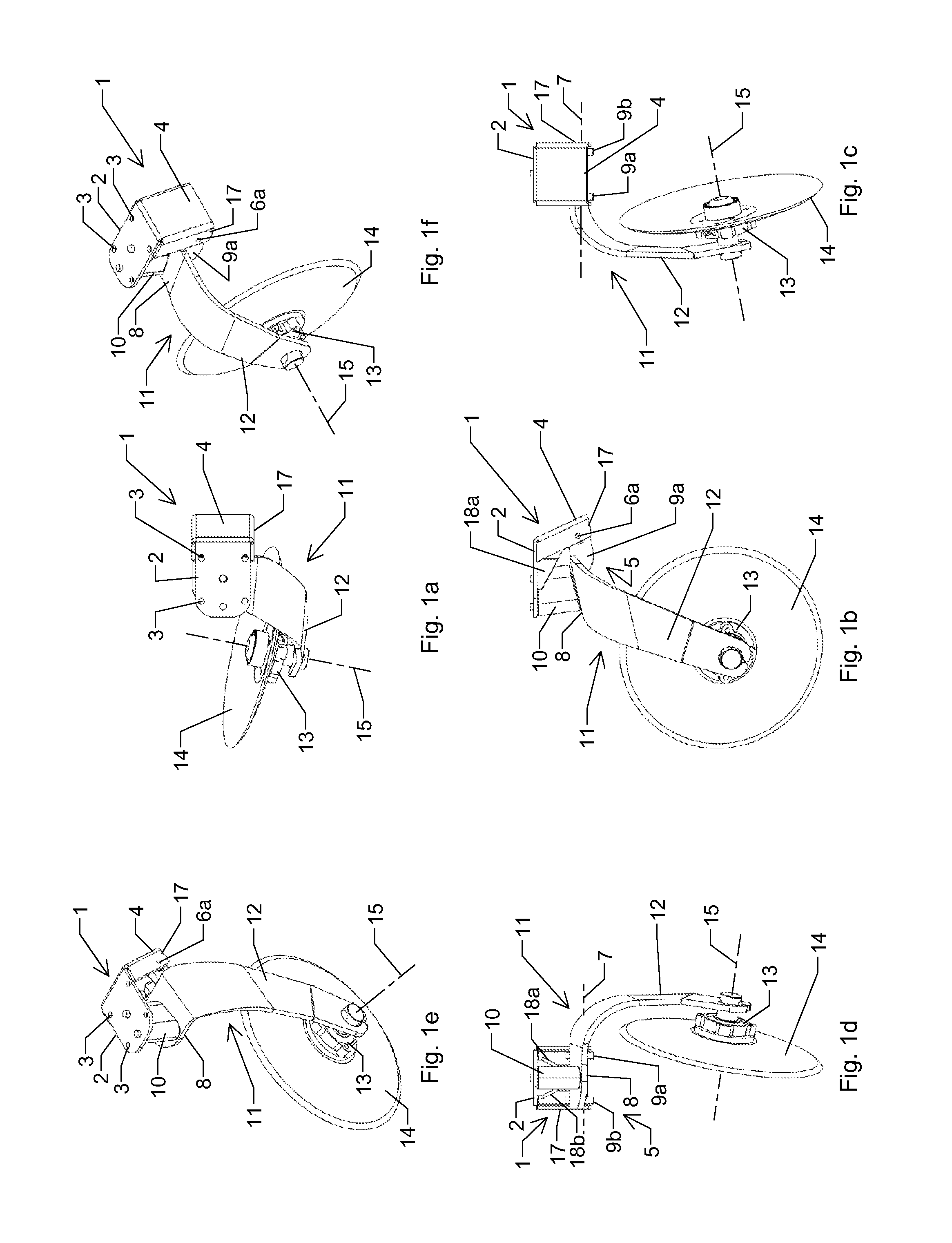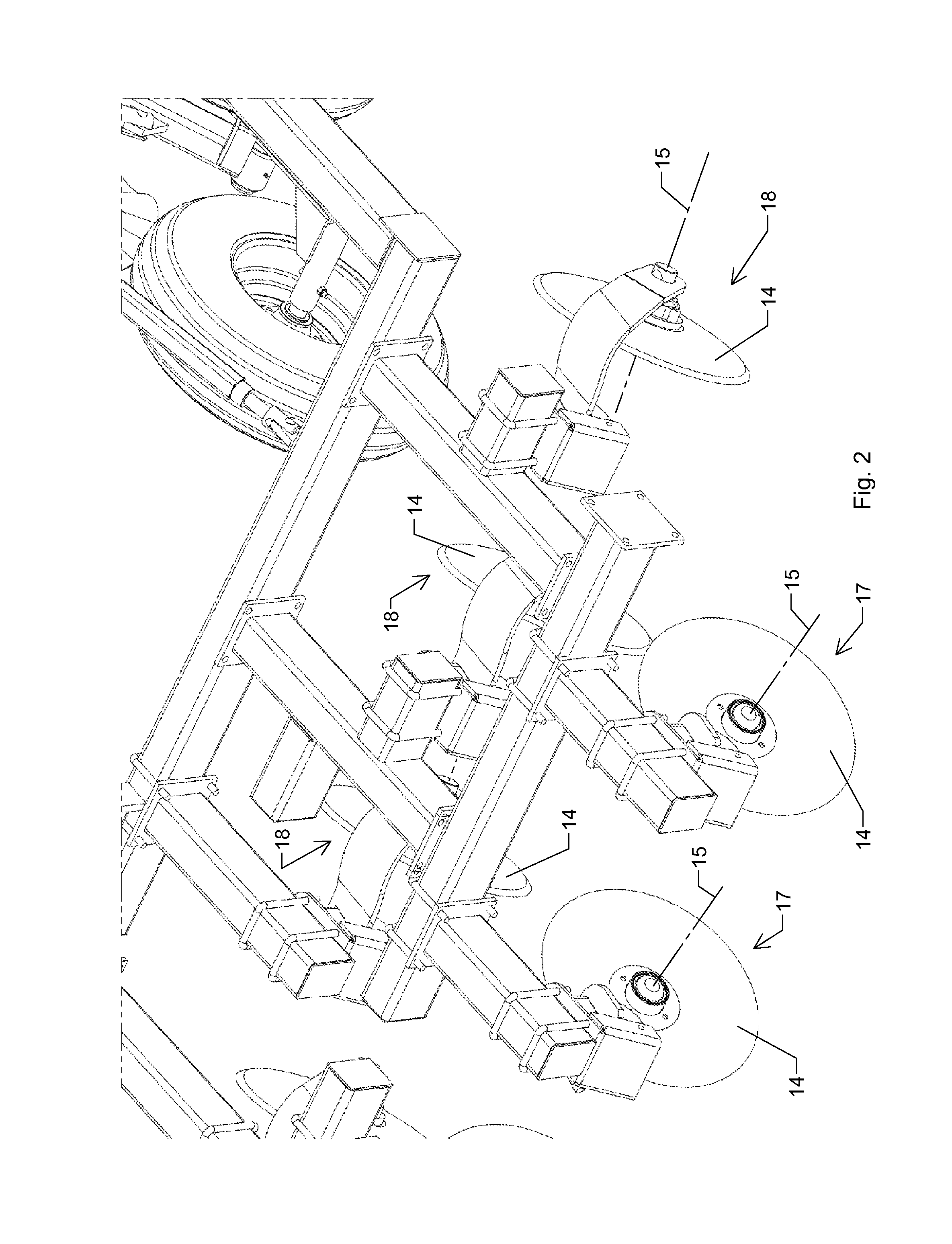Resiliently mounted agricultural tool and implement therewith
a technology of agricultural tools and implements, which is applied in the field of agricultural tools, can solve the problems of crop residue plugging between the discs, damage to the blades, the shaft bearings, or the shaft mounting assemblies, and the force transmitted to the frame is still substantial, so as to reduce the damage to the assembly, prevent the formation of furrows, and increase the speed
- Summary
- Abstract
- Description
- Claims
- Application Information
AI Technical Summary
Benefits of technology
Problems solved by technology
Method used
Image
Examples
Embodiment Construction
[0085]In describing the figures, like features are referred to by like reference numerals. Although not all features indicated on a particular drawing are necessarily described with reference to that drawing, all of the features are described with reference to at least one of the drawings.
[0086]Referring to FIGS. 1a-1f, an agricultural tool, in particular a tillage assembly, according to the invention comprises a mounting means 1 for securing the assembly to the underside of a frame member of an agricultural implement (not shown). The mounting means 1 includes a top plate 2 comprising a plurality of holes 3 for receiving an attachment means (not shown in this view, but normally comprising a pair of U-shaped hangers) for securing the mounting means 1 to the frame member. At the front end of the top plate 2 is provided a front plate 4 which may be attached to the top plate 2 or integrally formed therewith. The front plate 4 comprises a pair of side flanges 17 to provide it with additi...
PUM
 Login to View More
Login to View More Abstract
Description
Claims
Application Information
 Login to View More
Login to View More - R&D
- Intellectual Property
- Life Sciences
- Materials
- Tech Scout
- Unparalleled Data Quality
- Higher Quality Content
- 60% Fewer Hallucinations
Browse by: Latest US Patents, China's latest patents, Technical Efficacy Thesaurus, Application Domain, Technology Topic, Popular Technical Reports.
© 2025 PatSnap. All rights reserved.Legal|Privacy policy|Modern Slavery Act Transparency Statement|Sitemap|About US| Contact US: help@patsnap.com



